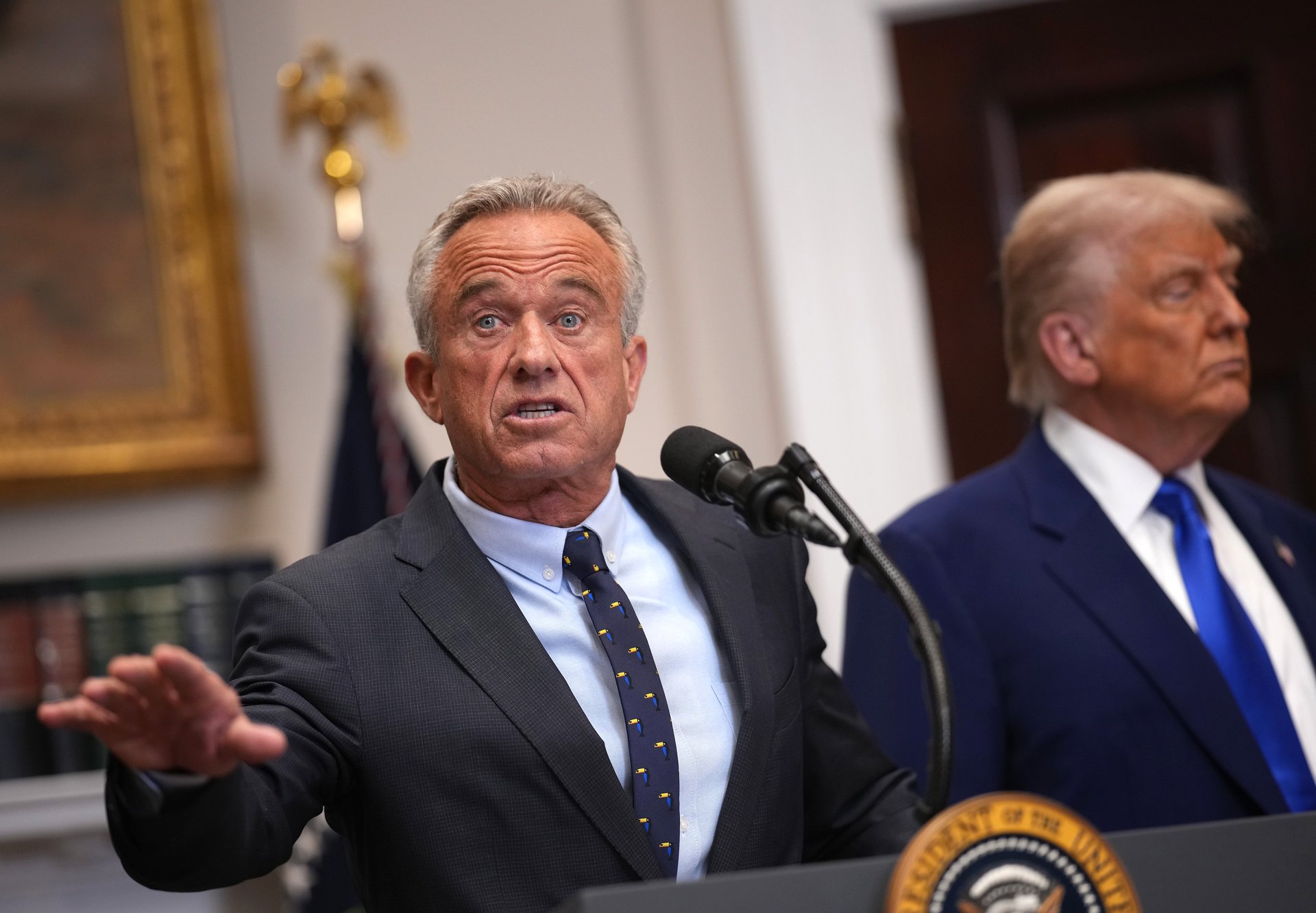
Money and masculinity: How wellness became big business and changed American health culture
We've never been more obsessed with our wellness, while simultaneously embracing unproven treatments and rejecting established science

We've never been more obsessed with our wellness, while simultaneously embracing unproven treatments and rejecting established science
In the first months of Donald Trump’s second presidency, the world of American healthcare has seen rapid transformations, largely at the behest of his Secretary of Health and Human Services, Robert F. Kennedy Jr.
Kennedy’s policies range from outright rejections of established science to stringent, new food regulations. Discredited, anti-vaccine doctors such as David Geier have been tapped for positions within the federal government. Outside Washington, some states have followed Kennedy’s lead in turning away from decades of medical precedent. In Utah, Republican Gov. Spencer Cox recently signed a ban on fluoride in drinking water.
“Almost all modern societies are concerned about creating a healthy population,” said Corinna Trietel, a historian of science, medicine, and popular culture, at Washington University in St. Louis. “Unhealthy populations are not productive. They don’t fight wars effectively. They suck up a lot of money.”
The current federal government is ostensibly very concerned with public health. When Kennedy was running for president, his slogan was MAHA, or “Make America Healthy Again.” After Kennedy endorsed Trump, Trump folded that, and Kennedy’s coalition, into his own campaign.
“Our goal is to get toxins out of our environment, poisons out of our food supply, and keep our children healthy and strong,” Trump said in an address to Congress in March. “And there’s nobody better than [Kennedy] and all of the people that are working with you, you have the best, to figure out what is going on.”
Trump’s rhetoric might be somewhat belied by the reality that his administration has fired more than 10,000 federal healthcare workers and slashed billions of dollars in funding for health and science.
But in many ways, this contradiction is at the heart of American health culture: We’ve never been more obsessed with our wellness, while simultaneously embracing unproven treatments and rejecting established science.
Americans spend significantly more on so-called wellness than any other country. In 2023, the U.S. wellness industry was worth $2 trillion. China, in second place, only spent $870 billion. At the same time, a third of U.S. residents don’t even have primary care physicians, according to a 2023 report from the National Association of Community Health Centers.
“Wellness and politics have been intertwined for quite a long time,” said Mariah Wellman, a professor in the College of Communication at Michigan State University who studies social media influence on the wellness industry. “When we talk about people like RFK Jr. and other more fringe folks, it’s not surprising but it is an increasing problem that seems to be coming to a head right now.”
It’s a puzzle that people across industries – from academia to marketing and medicine – are struggling to address. How can experts encourage people to continue embracing their health, while also safeguarding against the bad science and political extremism baked into many aspects of the wellness industry?
Since the onset of the COVID-19 pandemic in 2020, Americans of all stripes have developed an obsession with their health.
Ethan Bauley, the head of narrative intelligence at the marketing firm Weber Shandwick (IPG), analyzes online data to better understand narratives that are taking hold on social media. That includes health trends that pose challenges for the firm’s clients in the healthcare sector.
“Two things are true at the same time,” Bauley said. “One is that there is incredibly valuable, accurate information being shared online… It’s also true that people motivated by profit or ideological recruitment are using social media to influence people to sometimes make sub-optimal and even dangerous health decisions.”
This was not always the case for online wellness culture, Wellman said. Even just a decade ago, she said, wellness was largely supportive of mainstream medicine, not at odds with it.
“COVID-19 caused so much fear of the unknown,” Wellman said. “People who originally had felt like they had control over their health no longer felt that way. “Wellness influencers were able to make people feel like they had control of their health again, through accurate and inaccurate information.”
While the shift toward wellness transcended demographic categories, the male embrace of what was once an overwhelmingly female-focused industry is particularly notable when looking at changes in American health culture.
Jonathan Leary, who holds a doctorate in chiropractic and alternative medicine, witnessed a shift in his male clientele over a half-decade period practicing in Los Angeles.
“I never had a single male patient come to me unless they had a major trauma or major issue,” he said. “Men only came to me because it was like the last resort. Whereas my female patients were on top of it. They wanted to be preventative.”
Read more: The wellness world is getting wild and weird
Both skeptics and proponents of wellness culture noted the same shift in rhetoric that brought men into the wellness fold: American men were told by influencers that by embracing their health, they could boost productivity and success.
“Wellness went from being something quite crunchy and left-wing, to something that can be optimized and capitalized on,” Wellman said. “There was a shift in wellness language, too: It became a cutting-edge research space and [viewed] as very masculine in nature.”
Wellman noted that the shift toward a male culture is two-fold: Online wellness communities became more lucrative while male entrepreneurs supplanted female hobbyists. At the same time, there was a top-down emphasis on men’s need to become stronger.
“We saw it from the 2016 election onwards – from Donald Trump and from Fox News (FOXA),” Wellman said. “It’s very strategic because men have felt like they’re getting the short end of the stick. They feel as though they’re not being heard. And that has continued for the last almost decade.”
In some respects, Wellman added, this is the revival of a culture that began in the 1980s, when Americans were obsessed with bodybuilders and at-home fitness videos. As president, Ronald Reagan very publicly embraced caring about his own health.

Nowhere is the masculine embrace of technology and wellness clearer than in the so-called biohacking movement.
Bryan Johnson, the face of the biohacking movement, routinely goes viral for his often bizarre health experiments: injecting his teenage son’s blood into his middle-aged body, swapping out all the plasma in his body, and using stem cells from young Swedish volunteers to alleviate his joint pain.
“We are at war with death,” Johnson told his followers at a “Don’t Die Summit” earlier this year in New York. “We’re trying to create a new era of human beings.”
There’s a decidedly male flavor to the Don’t Die community. On stage, Johnson told the hundreds of people in his audience, with an impish grin, that many biohackers got their start in the culture due to their preoccupation with “boners.” For Johnson, virility is a constant focus: “Raise children to stand tall, be firm, and be upright,” he wrote in one X post, accompanying data about the duration of his 19-year-old son’s erections.
While Johnson’s movement is rife with sophomoric humor and dubious promises about the benefits of avoiding cooked seed oil, fasting on planes, and staying out of sunlight, it’s also big business. Johnson sells supplements, urine tests, blood tests, prepared meals, protein bars, and t-shirts.
And he’s not alone.
Many of Johnson’s recommendations are couched in language which sounds scientific. Bauley, the health misinformation expert, said using technical terminology is increasingly common among those trying to make money off a booming market.
“It has always been the case that the most effective propaganda has facts and truth in it. We’re seeing people referencing research and cherry picking data to gain credibility. That tactic has become more prevalent over time,” Bauley said. “The references to scientific studies have actually increased but it’s a lot of framing and reframing the research to suit certain narratives.”
When it comes to addressing the a-scientific, the exploitative, and the alarming elements of wellness culture, there is one fundamental challenge: There’s a lot of good information and positive actors, mixed in with the bad.
Over the years, Americans have spent less and less time with their doctors and received increasingly alienating healthcare services. For many people, going to the doctor is intimidating or inaccessible. Going on Instagram is easy and habitual.
Even the most extreme figures in online wellness communities spend an enormous amount of time reinforcing basic principles of healthy living: eat well, avoid excessive drug and alcohol consumption, and get good amounts of sleep and exercise. And while flashy experiments might grab headlines, there are many people creating wellness content online based on very basic health principles.
Arash Hashemi is a food influencer and the author of Shred Happens: So Easy, So Good, a cookbook based on the recipes he first developed for his Instagram page of the same name. After losing over 100 pounds, Hashemi began sharing recipes on social media, amassing more than 4 million followers.
“Social media has its challenges and certainly there are improvements that need to be made,” Hashemi said. “But it’s also helped open up conversations that weren’t happening before.
For men especially, “mental health has become more destigmatized and there’s more conversations about recovery, more on balance, more on rest,” Hashemi said. “These conversations weren’t really happening before [social media.] In many respects they were shunned.”
Hashemi said some of the most meaningful interactions he has with followers come from the parents of sick children. Having quick access to information about food that tastes good but also meets the needs of kids with cancer or diabetes was once a rarity.
“That’s that positive outweighs just about anything else,” he said. “Information is at your fingertips — you’re not reliant on a show coming on at a certain time or picking up a magazine at the store. I think that’s a really monumental shift forward as a society.”
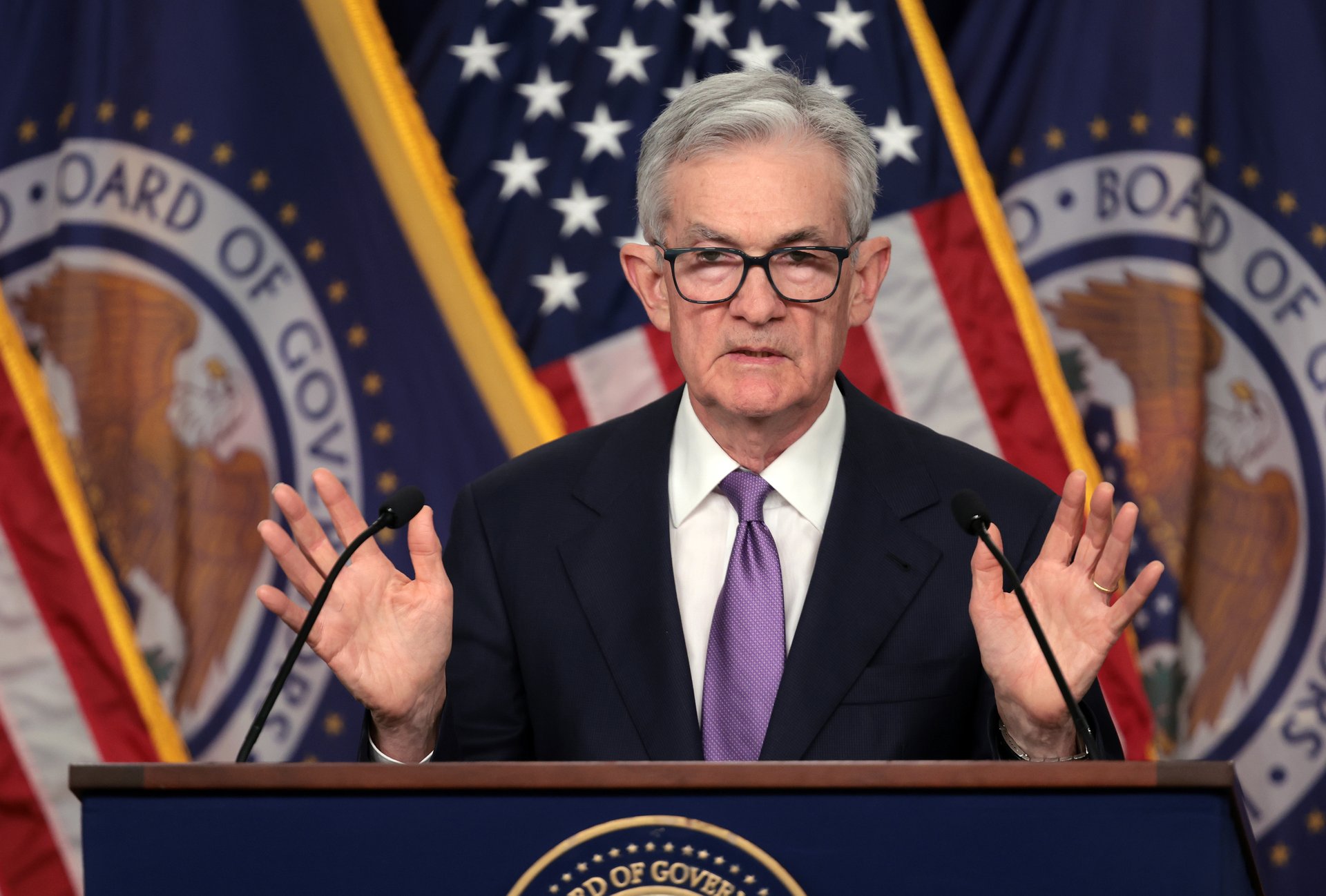
Good morning, Quartz readers!
A global mood swing. A survey from Bank America shows that investor sentiment is bouncing back to pre-Liberation-Day levels (but mostly overseas) and that recession fears are dropping.
AI’d like a lawyer? OpenAI is reportedly considering whether to accuse Microsoft of anticompetitive behavior as the future of their partnership hangs in the balance.
Enlisting OpenAI’s bots. The Defense Department just awarded a one-year, $200 million defense contract to the ChatGPT-maker for “frontier AI capabilities.”
Prime cuts coming. Amazon CEO Andy Jassy said in a company-wide email that AI will bump up the company’s efficiency and productivity — but likely decrease its headcount.
A factory reset. Chipmaker Intel will reportedly lay off up to 20% of its factory workforce in what the CEO called “difficult actions but essential to meet our affordability challenges.”
Tesla gets Cyberstuck again. The company’s stock slumped on news that Cybertruck and Model Y production will be suspended at its Austin plant for a week — the third pause in the past year.
The Federal Reserve began its June meeting Tuesday with interest rates expected to stay exactly where they are: elevated and immovable. Markets are betting on a less-than-1% chance of a cut.
The (likely) decision to hold rates steady puts the Fed squarely at odds with President Donald Trump, who has made his position on monetary policy characteristically loud and clear — calling Fed Chair Jerome Powell a “FOOL,” among other insults. But Powell, a Trump appointee, isn’t budging. Inflation may be down from its peak, but it’s still above the Fed’s 2% target. The Fed worries that if it cuts rates too soon, it could trigger another inflationary spiral… just as Americans are unclenching their wallets.
Meanwhile, the economic mood board is decidedly mixed. GDP dipped in Q1 and might do so again in Q2, job growth is slow, and consumer confidence is recovering from its April slump — a.k.a. “Liberation Day,” when Trump announced his wave of tariffs — but remains shaky.
The president wants rate cuts now — to stimulate growth, boost markets, and take pressure off his economy. But Powell is playing the long game. He’s reluctant to repeat the Fed’s 2021 mistake, when it underestimated inflation’s staying power and moved too slowly to correct course. This time, he’s doing the opposite: refusing to move too quickly.
It’s a delicate position.
Powell risks damaging the labor market if rates stay high for too long. But he could risk something bigger — the Fed’s credibility — if he caves to political pressure. When Trump last floated the idea of firing Powell, the market dropped 1,000 points. Investors, it seems, prefer a Fed that acts like it is above politics, even if it means sitting on its hands through some turbulence. Quartz’s Catherine Baab has more on how the Fed is holding firm while markets are holding their breath.
Senate Republicans just dropped their version of Trump’s sprawling tax-and-spending megabill — all 549 pages of it — setting off a phase of negotiations that could determine the size, shape, and shelf life of the next generation of GOP tax policy.
The proposal aims to extend Trump’s 2017 tax cuts and pay for them with steep reductions to safety net programs such as Medicaid and clean energy tax credits. The legislation leans into Trump’s campaign-season promises (No taxes on tips! Deductions for overtime! Bigger breaks for seniors!) — though most of those perks vanish in 2028, just as his term expires.
The Senate’s version includes stricter income phaseouts than the House-passed version and delegates enforcement details to the Treasury Department. Another key difference? Permanence. While the House bill took a short-term approach to tax extenders, Senate Republicans are aiming to make several key business breaks permanent, including immediate expensing of capital investments and full deductions for R&D.
In a departure from earlier GOP efforts, the Senate plan doesn’t entirely go scorched earth on Biden-era clean energy programs. Instead, the plan is giving solar, wind, nuclear, and geothermal projects more time before the plug is pulled — while quietly phasing out EV tax credits and adding protections to keep Chinese components out of clean-energy supply chains.
Negotiations with the House will be tense. The math is tight. The rhetoric will be looser. And if nothing else, this guarantees one thing: The next few weeks on Capitol Hill will be loud, long, and lousy with tax metaphors. Quartz’s Joseph Zeballos-Roig has more on how the tax bill became a policy Rorschach.
🚙 Mitsubishi is raising its prices (2.1%, on average) due to U.S. tariffs
✈️ JetBlue is cutting flights as it expects to lose big this year
💻 Microsoft says no more 9 to 5; hello, “infinite workday”
📦 Amazon is doubling Prime Days — as consumers pull back on spending
🔴 Kraft Heinz will remove artificial dyes from its U.S. food products by 2027
🏡 These states are where homeownership will be most out of reach in a decade
Our best wishes on a safe start to the day. Send any news, comments, and more to [email protected].

Production of Cybertruck and Model Y vehicles at Austin plant will be suspended for a week, the third pause in the past 12 months
Tesla’s Austin factory will pause production of its Cybertruck and Model Y vehicles the week of June 30, Business Insider reported. Workers were told the shutdown would be for maintenance on the production lines, to ensure future optimization.
Shares of the EV company slumped 4% on the news. While such a pause is routine for many automakers, particularly in summer, this is the third time Tesla has done so in the past 12 months: once in May, when workers attended seminars on company morale, and once in December, due to a battery shortage. For this latest pause, employees have the option of either taking paid time off or coming in for voluntary training — and to help with cleaning.
The production pause comes after Tesla’s first-quarter numbers were dismal. A new Model Y in January was expected to provide a boost, but sales were at their lowest since 2022, a 13% year-over-year decline. Some of the lower sales numbers are attributed to consumer boycotts in the wake of Elon Musk’s controversial role in President Donald Trump’s administration. Last month, Tesla shareholders wrote Musk an open letter demanding that he do his actual job.
The company also issued a massive recall of Cybertrucks in March because their exterior trim panels could easily be dislodged and cause traffic hazards.
Meanwhile, Tesla is preparing to launch its Model Y robotaxis in Austin on June 22, after almost a decade of Musk promising that such a launch was imminent.
Tesla’s second-quarter results are expected in July.
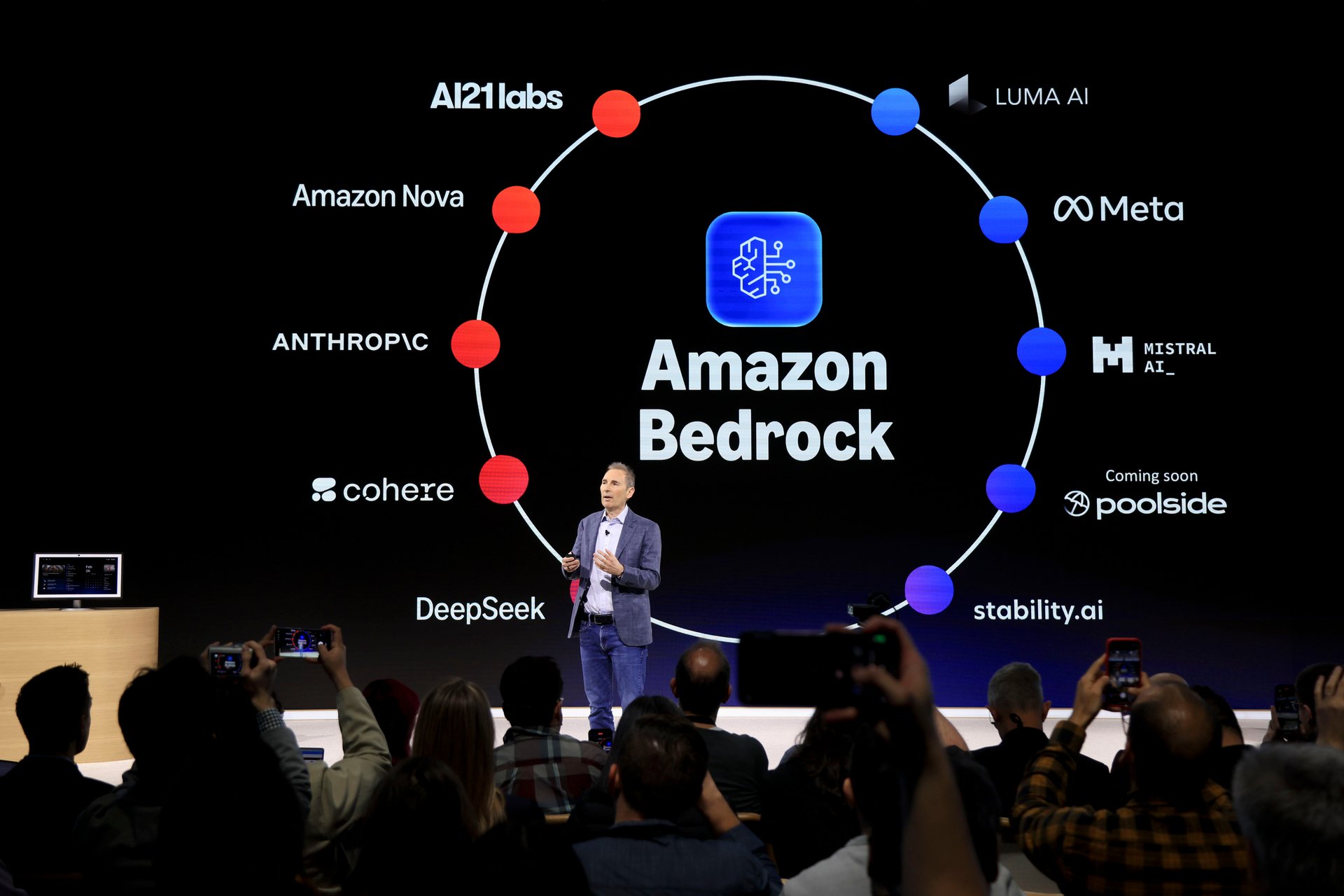
Andy Jassy wrote in a company-wide memo that he expects AI to reduce Amazon's corporate workforce but increase its efficiency
Amazon CEO Andy Jassy had a message for the company’s corporate workforce on Tuesday: The AI era is here — and while it’s going to make things faster and more efficient, it’s also going to mean fewer humans in the loop.
In a company-wide memo, Jassy said Amazon’s deepening investment in generative AI won’t just reinvent customer experiences — it will change the way the company operates internally. And, over time, that likely will mean fewer white-collar jobs.
“As we roll out more Generative AI and agents, it should change the way our work is done,” Jassy wrote. “We will need fewer people doing some of the jobs that are being done today and more people doing other types of jobs. It’s hard to know exactly where this nets out over time, but in the next few years, we expect that this will reduce our total corporate workforce as we get efficiency gains from using AI extensively across the company.”
Under Jassy, Amazon has already shown that it’s not afraid to make cuts. Since late 2022, the company has laid off more than 27,000 employees, part of a wave of post-pandemic belt-tightening that has swept across Big Tech. Now, even as revenue bounces back and capital spending surges, a hiring rebound hasn’t followed — especially not for corporate roles.
Jassy’s comments suggest that’s by design. Even beyond the office, Amazon’s workforce is flattening: The company now deploys more than 750,000 robots across its fulfillment network, and its latest model, “Vulcan,” is designed to handle heavier loads once managed by human hands.
At the same time, Amazon is rapidly embedding AI across nearly every part of its operations. More than 1,000 generative AI tools are already live or in development. Alexa is being retooled as “Alexa+,” a smarter assistant that can take action rather than just respond to prompts. On the shopping side, new features such as “Lens” (visual search), “Buy for Me” (cross-site purchasing), and automated sizing recommendations are being rolled out. The company’s generative AI shopping assistant is, according to Jassy, being used by tens of millions of customers.
Under the hood, AI is driving Amazon’s fulfillment strategy: managing inventory, forecasting demand, and working on robot efficiency. Customer service chatbots are getting an AI overhaul, and product listings are increasingly auto-generated. But the real breakthrough, according to Jassy, is the emergence of AI “agents” — software assistants capable of scouring the web, writing code, finding anomalies, and even handling research.
“There will be billions of these agents, across every company and in every imaginable field,” he wrote. “There will also be agents that routinely do things for you outside of work, from shopping to travel to daily chores and tasks. Many of these agents have yet to be built, but make no mistake, they’re coming, and coming fast.”
But perhaps the most telling part of Jassy’s vision is in an “agentic” future — one where AI software agents will handle much of the legwork that once filled certain jobs. The CEO thinks research, summarization, anomaly detection, translation, coding, and more will soon be delegated to bots that get smarter over time, leaving humans to “focus less on rote work and more on thinking strategically.”
“Agents will allow us to start almost everything from a more advanced starting point,” he wrote, adding that they’ll “change the scope and speed at which we can innovate for customers.”
Jassy encouraged employees to “get more done with scrappier teams,” attend training sessions, and adopt an AI-first mindset. In his words, those who embrace AI and help Amazon build its future will be “well-positioned to have high impact and help us reinvent the company.”
Jassy has floated this ethos before.
In his April shareholder letter, the CEO urged Amazon to operate like the “world’s largest startup” — prioritizing speed, invention, and risk-taking over headcount and hierarchy. Tuesday’s memo sharpened that idea: In an AI-driven workplace, fewer people may be part of the equation.
Amazon is far from alone. Microsoft and Google have both leaned into AI while slowing hiring and cutting thousands of roles. Startups like Harvey and Adept are pitching AI agents as the future of office work. And Anthropic CEO Dario Amodei recently warned AI could wipe out 50% of entry-level jobs and drive unemployment up by as much as 20% within five years. Others, including Nvidia’s Jensen Huang and billionaire Paul Tudor Jones, have argued that the shift will improve job quality and create new kinds of work — but even they acknowledge it will require significant retraining and regulatory oversight.
For now, Amazon is moving fast, scaling AI across its business — and signaling that headcount growth is no longer a prerequisite for progress.
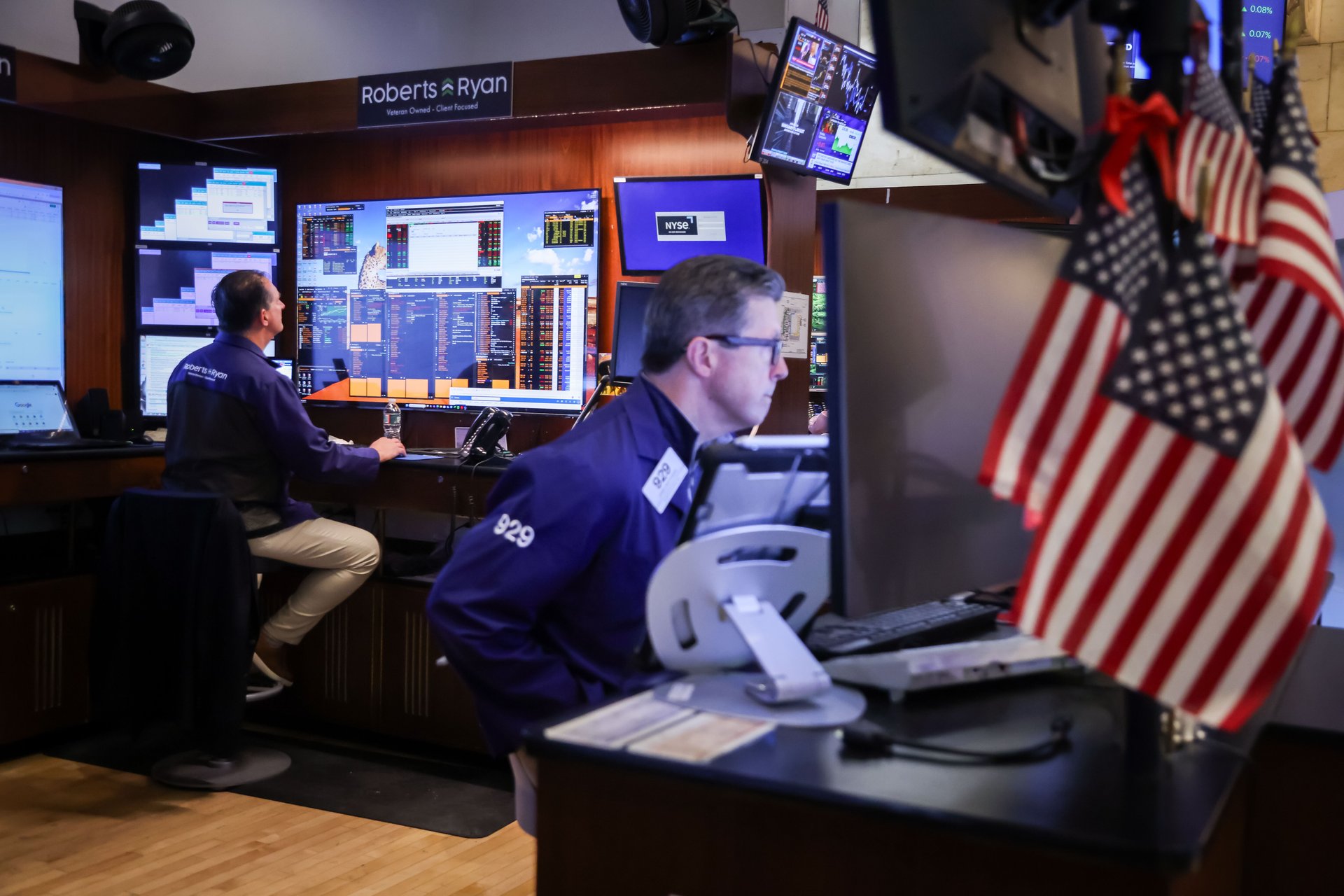
While 66% of respondents see a soft economic landing, 54% predict international stocks will outperform U.S. equities over the next five years
Investor sentiment is back — well, at least, among global fund managers. According to Bank of America’s June 2025 Global Fund Manager Survey, optimism has has swelled to pre‑tariff‑shock levels, wiping out the dips stirred by President Donald Trump’s “Liberation Day” tariffs.
The headline numbers pack a punch: 66% of fund managers now anticipate a “soft landing” for the global economy, up from 37% in April. And while 82% of respondents in April predicted weakening growth, only 46% hold that view in June. That’s the largest two-month sentiment swing since last year’s presidential election. Recession fears have diminished drastically — now, 36% of respondents think a downturn is "unlikely."
So what’s behind this mood swing? The survey, which was conducted from June 6 to June 12 and captures responses from 190 fund managers overseeing over $520 billion in assets, says diffusing trade tensions, rolled-back and somewhat stabilizing tariffs (expected by about 75% of investors to be an average of 15% or lower), and better-than-feared U.S. economic data are the big factors.
This resurgence in confidence is reflected in a significant shift in investment strategies. Fund managers are lowering cash allocations to a three‑month low while boosting positions in emerging‑market equities, energy, banks — and leaning especially into Eurozone stocks, supported by a recent Germany fiscal stimulus.
But there’s a twist.
While the world warms up, sentiment toward U.S. assets is increasingly bearish. The U.S. dollar is now the most underweighted currency in at least 20 years, making it one of the hottest “crowded trades,” alongside gold and tech. The dollar index has tumbled nearly 9.6 % this year, and more than half (54%) of fund managers predict international stocks will outperform U.S. equities over the next five years.
Concerns over the sustainability of U.S. fiscal policy are also prevalent, with 81% expecting recent spending bills to significantly add to national debt. Treasury yields are predicted to climb, possibly reaching 5%.
So while confidence largely rebounds abroad, it’s cooling off at home. The latest survey paints a clear picture: Global capital is rotating out of U.S. assets and chasing upside in Europe and emerging markets. Risk appetite is back — but it’s looking outward. Fund managers are shedding cash, leaning into higher-beta plays overseas. The bull case is building, but so are the tail risks — shaky fiscal paths, geopolitical sparks, and a market still on edge.

The Japanese carmaker is the latest to pass on costs to consumers as a result of President Trump's trade policies
The price of Mitsubishi cars will rise 2.1% on average, the Japanese carmaker said Tuesday.
Mitsubishi temporarily suspended deliveries to U.S. dealers after President Donald Trump's announcement of sweeping tariffs in April, but resumed doing so last week, Reuters reports. The company said the new price hikes, which take effect on Wednesday, would not apply to any vehicles currently in dealers’ showrooms.
A company spokesperson said that Mitsubishi "regularly reviews vehicle pricing in order to ensure we are in line with segment expectations and the latest market trends.
"Based on our most recent evaluation across the industry," the spokesperson said, Mitsubishi "will revise the Manufacturer’s Suggested Retail Price (MSRP) on select 2025 vehicles, effective June 18. There will be no adjustments to vehicles already in dealer inventory.”
Mitsubishi has had a strong 18-month performance: Its 2024 sales were up 26%, to 110,000, its best performance since 2019. And 2025 looks just as promising, with sales up 11% in the first three months of the year. The company will soon reveal updates to the new Outlander model and a new EV scheduled for 2026.
Last week, Trump mused about hiking tariffs again, ostensibly to onshore more U.S. production. Yet auto tariffs have been enormously unpopular with the auto industry. Mitsubishi is not the first to hike prices: Both Subaru and Ford did so by as much as $2,000.
In March, the S&P Global downgraded its 2025 forecast for U.S. vehicle sales by 700,000.
Meanwhile, Fitch Ratings data shows that the number of subprime automobile borrowers who are at least 60 days past due on their loans rose to 6.56%, the highest number since the agency began collecting data in 1994.
The rising delinquencies point to fundamental economic weaknesses, according to Mariano Torras, an economics professor at Adelphi University. He says what is happening among subprime auto borrowers is the “canary in the coal mine” and that the problems in subprime auto loans are likely to spread to other parts of the economy.
—Kevin Williams contributed to this article.
Correction: An earlier version of this story misstated what Mitsubishi said about price increases. The company said it "regularly reviews vehicle pricing," and that the price hikes were in line with its "most recent evaluation across the industry." Mitsubishi did not say it was raising prices as a result of tariffs.
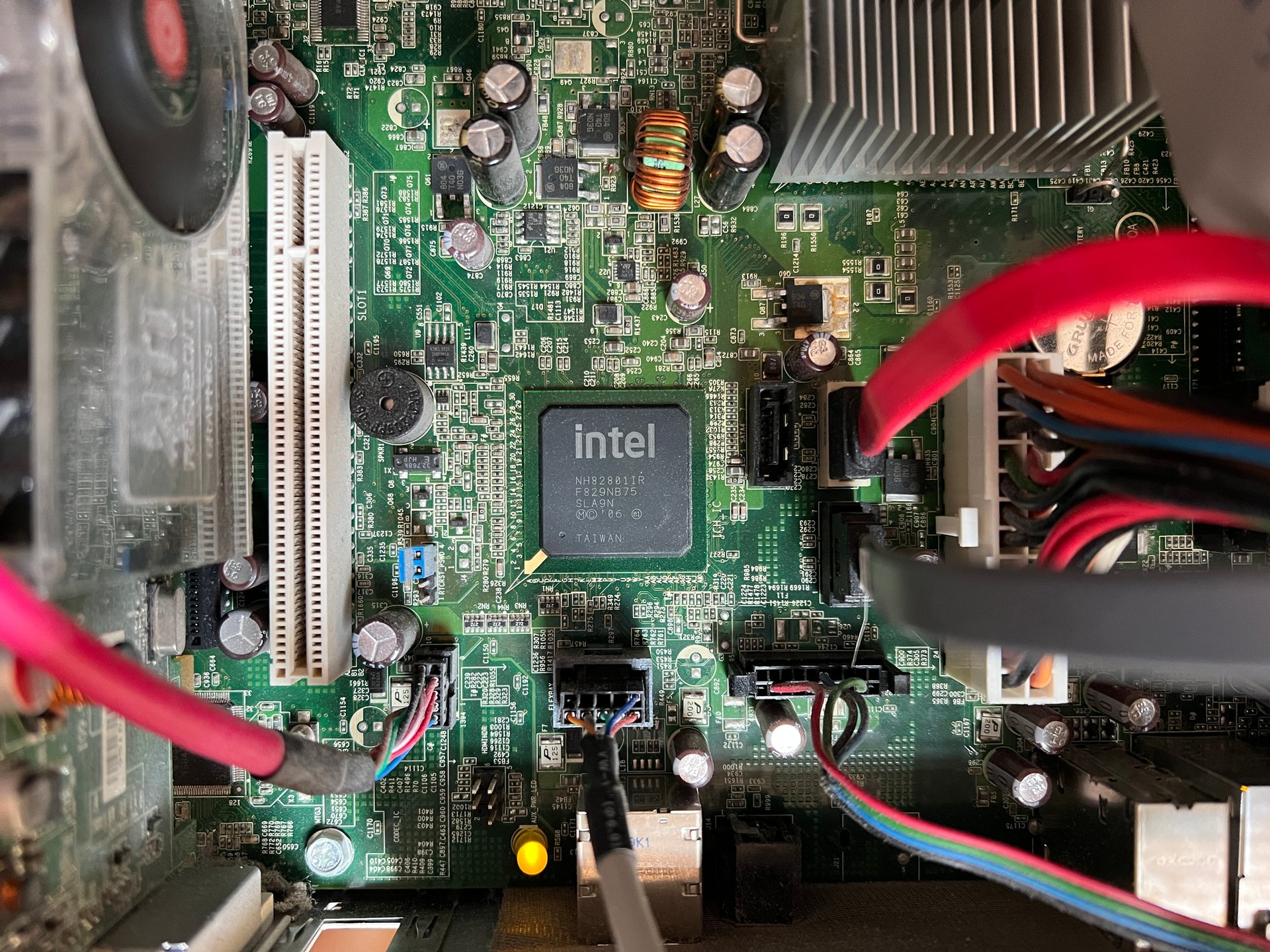
Intel called the layoffs an effort to begin "removing organizational complexity"
Intel is reported to be laying off up to 20% of its factory workforce as the struggling chipmaker tries to turn its business around.
“These are difficult actions but essential to meet our affordability challenges and current financial position of the company," Intel Vice President Naga Chandrasekaran wrote in a letter to employees obtained by Oregon Live, detailing that the company will make the 15% to 20% cut on factory jobs in July.
The company, which did not immediately return a request for comment, told the paper in a statement that “removing organizational complexity and empowering our engineers will enable us to better serve the needs of our customers and strengthen our execution." It did not comment on the specifics or reasons for the cuts.
In April, Intel had announced that it planned to purge 20% of its staff to pare back bureaucracy within the company, which would leave more than 20,000 people without a job. It wasn't immediately clear if the factory cuts are part of those plans or a separate downsizing initiative.
The previous layoff announcement was the first major action undertaken by chip veteran Lip-Bu Tan, who took the helm as Intel’s CEO earlier this year.
“Under my leadership, Intel will be an engineering-focused company. We will listen closely and act on your input. Most importantly, we will create products that solve your problems and drive your success,” Tan said in March.
The company has been struggling to keep pace with competitors like Nvidia, which replaced Intel on the Dow Jones Industrial Average in November 2024.
The company has also been the target of possible acquisitions and has been working with investment bankers at Morgan Stanley and Goldman Sachs to right its business, including by potentially splitting its foundry division.
The chipmaker’s struggles have even caught the eye of President Donald Trump, who, according to Bloomberg, reported that Taiwanese contract manufacturer TSMC (TSM) is considering taking a controlling stake in chipmaker Intel’s factories at the request of Trump.
Trump’s team raised the idea of a deal between the two firms in recent meetings with officials from TSMC, and they were receptive, Bloomberg reported, citing a person familiar with the matter.
—Kevin Williams and Ece Yildirim contributed to this article.

Travel demand is down and the domestic market is oversupplied, but premium experiences on prime routes are still the plan
JetBlue does not expect to break even this year due to falling travel demand. The company is also cutting costs by axing some off-peak flights.
CEO Joanna Geraghty told staff that “even a recovery won’t fully offset the ground we’ve lost this year and our path back to profitability will take longer than we’d hoped,” in an internal memo on Monday, CNBC reports. “That means we’re still relying on borrowed cash to keep the airline running.”
JetBlue is hardly alone; many airlines are citing a lack of consumer confidence in 2025 due to macro economic uncertainty, with fewer bookings even as fares plummeted. The domestic market is oversupplied, and several large airlines cut back their growth plans for the second half of the year.
JetBlue hasn’t posted a profit since 2019. Starting in 2021, it spent three years pursing a merger with Spirit Airlines, which was shot down in March 2024 when a federal judge blocked the deal. Geraghty had just stepped into the CEO job a month before; she called the Spirit affair a major “distraction.” Last August, JetBlue took on $2.75 billion in debt.
Cost-cutting measures will involve examining unprofitable routes, pausing plans to retrofit some older jets with new interiors, and reassess hiring plans, according to Geraghty’s memo. But the mid-range airline still plans to move ahead with offering premium experiences on high-demand flights to attract more business travelers.
Last month, a new partnership with United Airlines enabled cross-booking and shared frequent-flyer rewards.
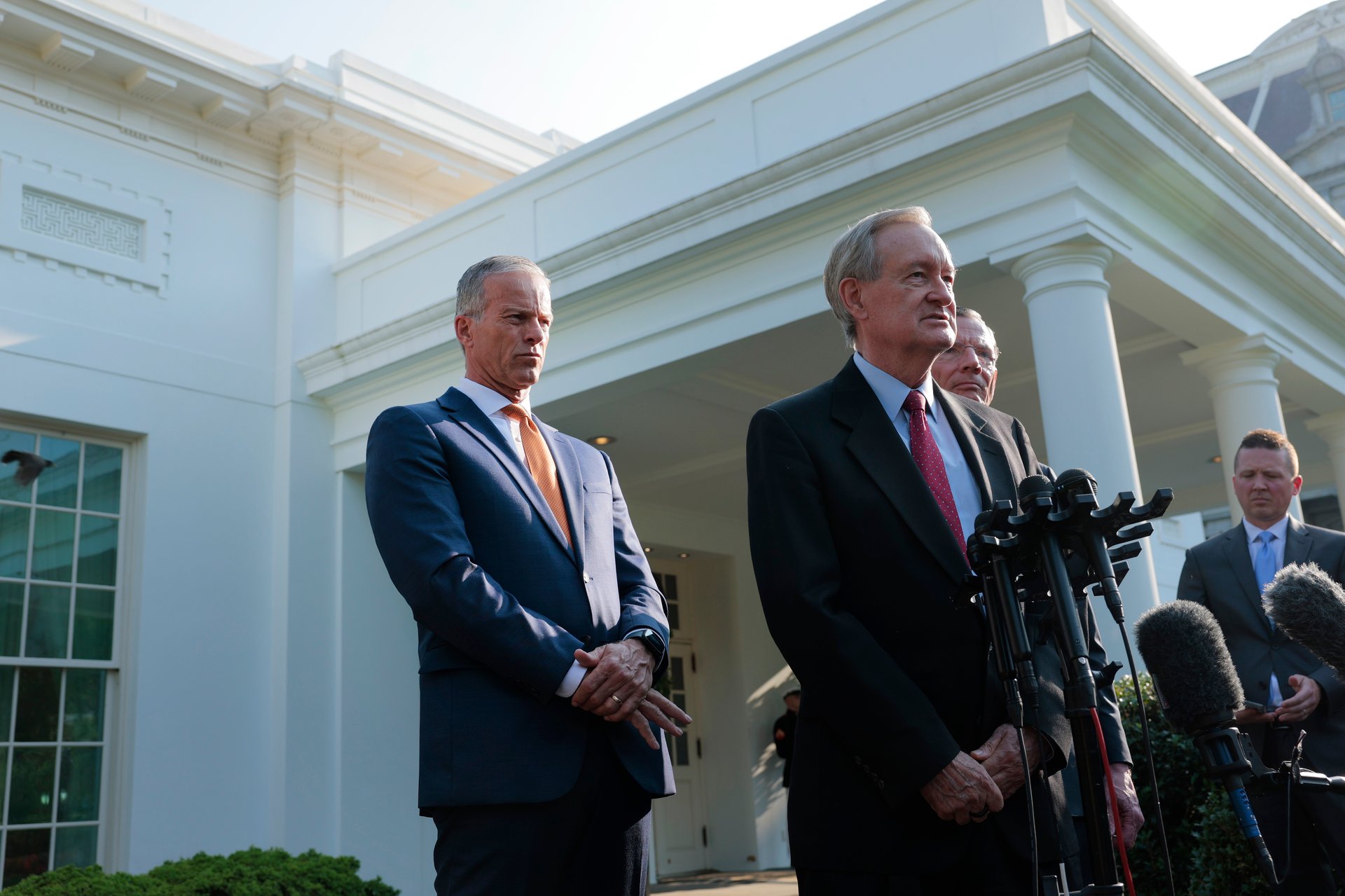
Trump campaign promises for no taxes on tips and overtime pay are still in, with limits. The child tax credit got a modest increase
Senate Republicans released their tax portion of President Trump’s megabill on Tuesday afternoon, kicking off what’s expected to be an intense period of negotiations to send the final version of the measure through the House and onto the White House.
The 549-page bill would extend the bulk of the GOP’s 2017 signature tax cuts, financed with steep cuts to safety net programs like Medicaid and clean energy tax credits.
“It powers the economy by permanently extending critical pro-growth provisions and introduces new incentives for domestic investment, providing certainty for American job creators to spur domestic economic activity and invest in their workers,” Senate Finance Chair Mike Crapo said in a statement accompanying the legislation.
Republican senators are racing to pass their megabill using a party-line reconciliation process to overcome united Democratic opposition. Here are 5 takeaways.
The Senate GOP legislation includes Trump’s campaign promises to eliminate taxes on tips and overtime pay. It also would establish a tax deduction on auto loan interest and a larger standard deduction for seniors aged 65 and above. The latter is meant to replace a Trump promise to eliminate taxes on Social Security benefits. All would expire at the end of Trump’s term in 2028.
The House-passed tax-and-spending bill had identical measures, but GOP senators put more limits, presumably to cut the final price tag. On getting rid of tax on tips, the GOP bill would set up a maximum $25,000 deduction that starts phasing out at $150,000 for singles and $300,000 for couples. It applies for occupations that usually receive cash tips, such as bartenders or waitresses. A list of specified jobs that apply for the tax break will be released by the Treasury Department within three months of the bill being signed into law.
When it comes to no tax on overtime pay, the GOP legislation establishes a deduction that peaks at $12,500 for singles, and $25,000 for those filing joint tax returns. It has a larger phase out that begins at $150,000 for singles and $300,000 for couples filing jointly.
GOP senators are keen to restore a set of business tax breaks that expired three years ago and make them permanent. Past efforts to revive them in bipartisan negotiations failed, despite the support the provisions also attracted from Democrats and influential business groups.
The three business tax provisions include extending rules allowing companies to deduct the capital expense costs immediately, instead of spreading them over years; establishing a bigger interest deduction; and restoring the ability for businesses to immediately write off research and development expenses.
“Holding the ultimate cost of the bill constant, making these three provisions permanent is critical to achieving the growth needed to bring in more revenue,” George Callas, once a senior tax aide to former House Speaker Paul Ryan and currently with advocacy group Arnold Ventures, wrote on X.
Other provisions such as scholarship tax credits are also made permanent, in contrast to the House GOP’s short-ladder approach. “It's not just the business extenders: there's a lot more permanency in the Senate tax bill across the board,” said Andrew Lautz, a tax expert at the Bipartisan Policy Center.
Some GOP senators are hesitant to immediately scrap clean energy tax credits that Democrats approved under former President Joe Biden. That skepticism was channeled into the Senate GOP tax bill.
Senate Republicans would give wind and solar projects more time to qualify for the credits and not shut them off abruptly. The bill is also friendlier to geothermal, nuclear, and hydropower projects, while imposing new limits to prevent Chinese products from entering U.S. supply chains.
Still, other clean energy measures are eliminated outright. The $7,500 clean vehicle credit expires six months after the bill is enacted.
One big GOP priority hasn’t been changed from the House bill. The Senate GOP bill would establish a tax-preferred savings account with a $1,000 contribution from the federal government for children born during Trump’s term, known as "Trump accounts." They’re able to access the cash for certain purposes after turning 18, and have full control of the money at the age of 30.
Senate Republicans would increase the child tax credit to $2,200 and make it permanent. It’s a modest increase from the current level of $2,000, which is set to revert back to $1,000 at the end of this year if Congress doesn’t step in.
Republican senators drastically scaled back a $40,000 limit on the state and local tax deduction, a provision allowing individuals or married couples to subtract the amount paid in state tax from their federal tax bill. Republicans put the limit in place to help finance the 2017 tax cuts, and most of the SALT deduction flows to high-earners in predominantly Democratic states.
SALT had been the center of tense negotiations in the lower chamber and the policy changes triggered anger among Republicans hailing from states like New York. GOP Rep. Mike Lawler of New York called the SALT changes “dead on arrival” in an X post.

Workers are logging on early and staying online late, with technology making it impossible to find time away from work, according to a new report
If you feel like you're working from the moment you wake up to the time you go to sleep, you aren't alone.
According to new analysis from Microsoft, more and more office workers are experiencing an "infinite workday," where they are online or doing some form of work from morning to night.
Analyzing data from the 365 suite, Microsoft found that the workday starts earlier than ever, with 40% of people already online and reviewing emails at 6 a.m. That's probably because the average worker using 365 receives 117 emails and 153 Teams messages per workday.
The company also found that it's hard for workers to get much done between 9 and 5, with 57% of meetings called in the moment without a calendar invite. Plus, most workers have only two minutes of focus time before being interrupted by a meeting, email, or message during those core work hours.
Microsoft revealed that "meetings hijack prime focus time," since 50% of meetings take place from 9-11 a.m. and 1-3 p.m., which is when research has shown people are mostly able to be productive.
And after 5 p.m., things aren't looking better, with the workday increasingly bleeding into evenings and weekdays. Data show that 29% of active employees check their emails again around 10 p.m. and the average worker sends or receives 50 Teams messages outside of core work hours each day.
Microsoft also saw a 16% year-over-year increase in evening meetings and reported that 20% of workers are actively working over the weekend.
The company said its data "points to a larger truth: the modern workday for many has no clear start or finish."
"As business demands grow more complex and expectations continue to rise, time once reserved for focus or recovery may now be spent catching up, prepping, and chasing clarity," Microsoft said. "It's the professional equivalent of needing to assemble a bike before every ride. Too much energy is spent organizing chaos before meaningful work can begin. "